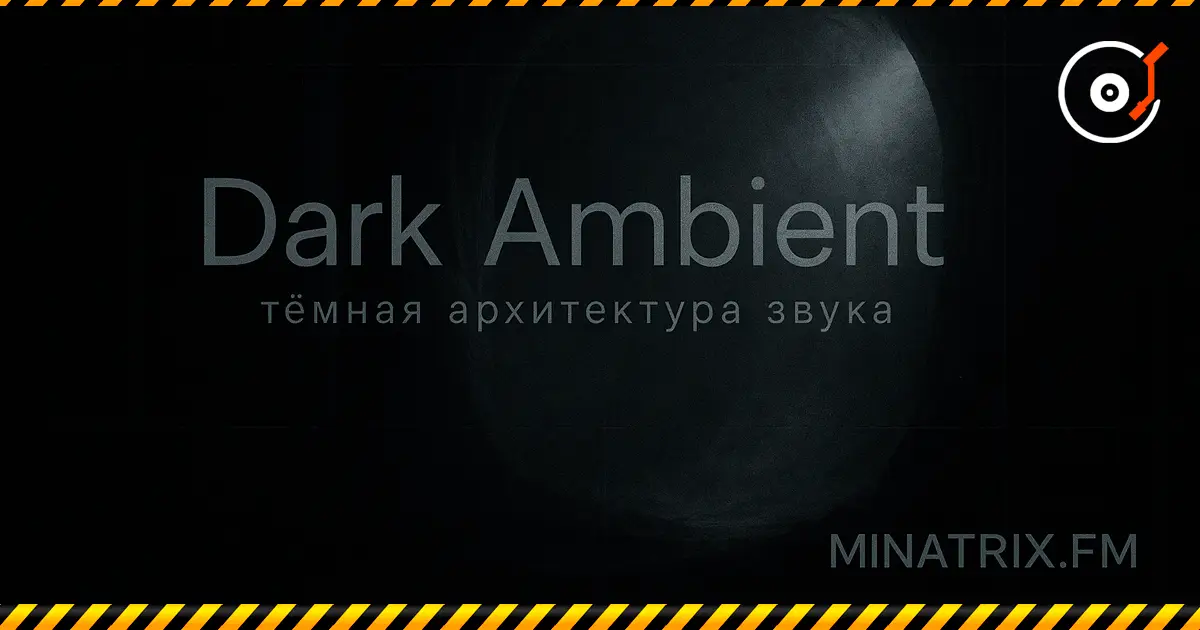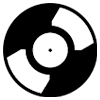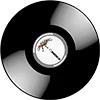
Dark ambient — the dark architecture of sound: the genre’s history from industrial roots to cinematic ambient, subgenres (ritual, black ambient), key artists and releases, production techniques, listening tips, and a curated album list.
Dark ambient is a subgenre of post-industrial and ambient music built on slow drones, deep sub-bass, long reverberations, and sound textures that create a sense of place—from deserted halls to underground chambers. It took shape in Europe by the mid-1980s as the “dark” branch of ambient and quickly developed its own aesthetics and circle of creators.
What it sounds like
-
Foundation: sustained drones, noise beds, scarcely audible harmonics, sparse percussive accents, whispers, and field recordings.
-
Timbre: “cool” synths, granular samples, distant thuds, electrical hum, cavernous room resonances.
-
Effect: not consolation but detachment and a sense of “slowed time”; the music creates a place, not a song.
Origins and development
Pre-1980s: prerequisites
-
Space ambient and minimalism of the 1970s (extended forms, rejection of rhythm and traditional melody).
-
Industrial pioneers of the late 1970s–early 1980s who worked with environmental sounds, non-linear structures, and “non-musical” sources.
The 1980s: the birth of a language
-
Producers begin to work systematically with low-frequency layers, the acoustics of real spaces, and monumental reverbs. In parallel, field-recording and processing practices take root, with the “source” of a sample hidden behind texture.
The 1990s: scene self-identification
-
Terminology emerges for the “dark” branch of ambient and for isolationism—music that repels rather than lulls. By the mid-decade, ideas crystallize in compilations and reviews, establishing the scene as a distinct direction.
2000s–2020s: cinematic reach and media
-
The scene gravitates toward film and game sound design; curatorial labels with a clear aesthetic form; albums are increasingly built like conceptual “films without frames”.
How it differs from classic ambient
| Parameter | Classic ambient | Dark ambient |
|---|---|---|
| Function | Background, relaxing | Atmospheric-psychological, tense |
| Harmony | Major, contemplative | Minor, amorphous with quivering intervals |
| Textures | Airy pads | Dense drones, noise, resonances |
| Space | Bright/“open” | Enclosed, subterranean, industrial |
Subgenres and adjacent zones
-
Ritual ambient—hypnotic, repetitive structures, percussion, and “ritual” timbres; a focus on trance-like states.
-
Black ambient—a fusion with black-metal aesthetics: cold pads, guitar drones, “icy” acoustics.
-
Isolationist ambient—a 1990s historical term for detached, “anti-comfort” ambient.
-
Dungeon synth (adjacent branch)—more melodic and “fantasy-retro”; grew alongside black metal and home cassette practices.
Key figures and starting points
Pioneers and the canon
-
Lustmord (Brian Williams)—one of the chief architects of the genre. The album Heresy (1990) outlined the canon: infra-low bass, extreme spaces, field recordings, and viscous “subterranean” atmospheres.
-
Cold Meat Industry—a Swedish label working with dark ambient, death industrial, and neoclassical dark wave; a full “school” of production and design formed around it.
-
raison d’être (Peter Andersson)—exemplary dramaturgy of drones, industrial textures, and quasi-sacral timbres (medieval hues, psalmody).
Cinematic ambient and the modern scene
-
Atrium Carceri (Simon Heath)—since 2003 has developed the seriality, narrative, and “archival” cinematics of dark ambient.
-
Cryo Chamber—a label founded in 2012 that has become synonymous with “cinematic” dark ambient: high-quality recording, a recognizable visual style, artist collaborations, and multi-part releases.
Influence on media
-
Akira Yamaoka (the Silent Hill series) exemplifies how dark-ambient techniques (noise, the “cold” of space, industrial textures) function in interactive horror to create the tangibility of the unseen: smell, wind, dampness.
How dark ambient is made: production techniques
Sound sources
-
Drones and synthesis
-
Analog/modular synths, FM/wavetable, “stretched” samples, guitar drones through loopers.
-
-
Field recording
-
Spaces with characterful acoustics: tunnels, abandoned workshops, caves, stairwells, hangars.
-
-
Object percussion
-
Metal, glass, wood, stone, contact mics; friction noises, ricochets, creaks.
-
Processing and space
-
Convolution reverbs (impulse responses of real places), long delays, diffuse reverberators.
-
Low-frequency architecture: separating sub-bass from upper noise bands, gentle multiband compression, phase control.
-
Distressing and granular: sample degradation, “freezing” attacks, gluing layers so the source becomes unrecognizable.
Arrangement and dramaturgy
-
Not verse–chorus, but micro-events and drift: rare accents, dynamic “swell-and-subside,” gradual changes of acoustic planes.
-
Layer buildup/thinning instead of traditional build-ups.
How to listen (and why)
-
In silence and on headphones—infra-low oscillations and long reverb tails “come alive.”
-
As complete albums—this is a medium, not a set of singles.
-
In “cinema mode”—reading, late-night work, visual practices; the music sets a scene’s context and temperature.
Practical guide: where a listener should start
-
If you want the canon: Heresy—for the “subterranean bass” and monumentality; selected albums by raison d’être—for “cathedral” tragedy.
-
If you want cinematics: early-to-mid Atrium Carceri—for world-building and narrative; collaborative releases in contemporary cinematic dark ambient.
-
If you prefer the “ritual”: ritual ambient—for trance and monotone hypnosis.
Practical guide: where a producer should start
Minimum: any DAW, a stereo recorder/audio interface, 1–2 microphones (dynamic/condensor + contact), headphones with honest low end.
Plugins/instruments: long reverbs, impulse responses, granular processors, pitch shifters, spectral tools.
Process:
-
Create a core loop (drone + quiet texture).
-
Add rare events (a metallic sigh, a distant hit).
-
Shape a trajectory of 6–12 minutes with gentle buildup/rarefaction.
-
Check mono compatibility and sub-bass balance (it’s very easy to overload the lows on “home” systems).
FAQ
Is this “horror music”?
Not necessarily. Dark ambient is about a sense of space and presence, not about jump scares. It can be sorrowful or meditative as well.
How is it different from dungeon synth?
Dungeon synth is more melodic, alludes to medieval/fantasy aesthetics and cassette culture; dark ambient is more acoustic-architectural and “cinematic.”
Can I use it for meditation/sleep?
Some releases—yes (especially ritual/drone ambient). But many recordings deliberately create tension—choose thoughtfully.
Fun facts
-
“Locations as instruments”: many dark-ambient artists intentionally record in places with unique acoustics (factories, tunnels, natural cavities) to give timbre “volume” and a distinctive reverberant signature.
-
From scene to screen: the genre’s techniques have become staples of horror-game and film sound design—working with “inaudible” parameters (the feeling of cold, damp, “smell”) makes worlds convincing.
-
Curatorial labels as “schools”: the scene rests on strong imprints with a unified audio-visual code that set expectations and raise quality standards.
Summary
Dark ambient is not merely a “gloomy background.” It is the design of space through sound: a music-as-environment in which the architecture of silence, the physics of low frequencies, and the dramaturgy of reverberation matter more than conventional melody and rhythm. From the industrial laboratories of the 1980s to the cinematic albums of the 2000s and beyond, the genre has become a language for telling stories without words.

